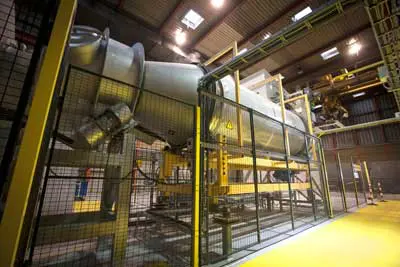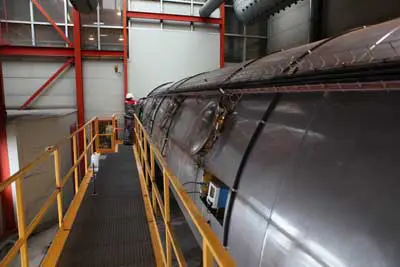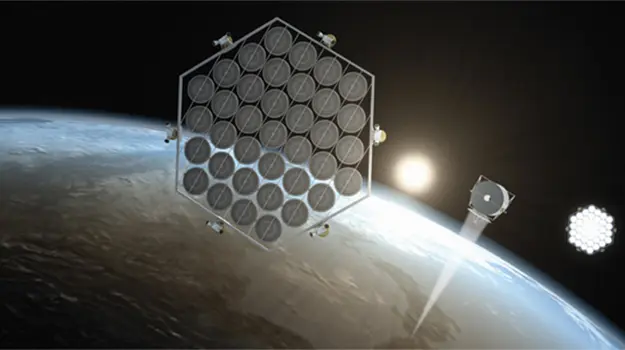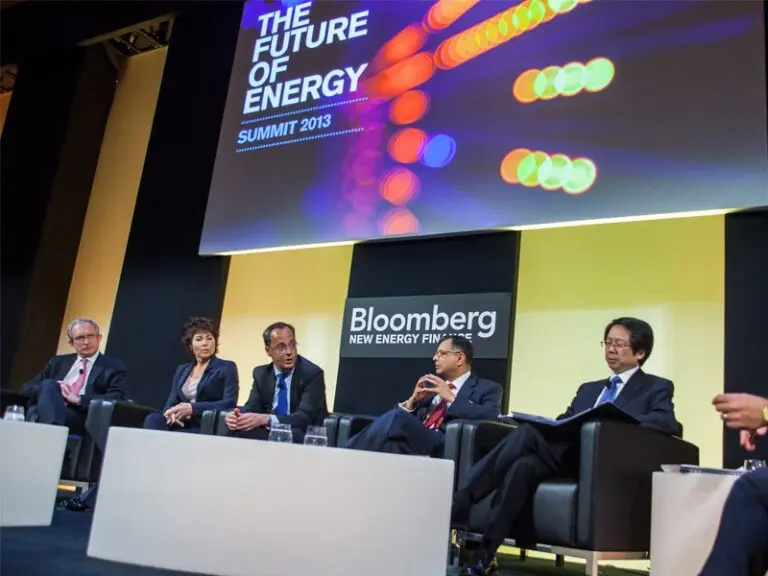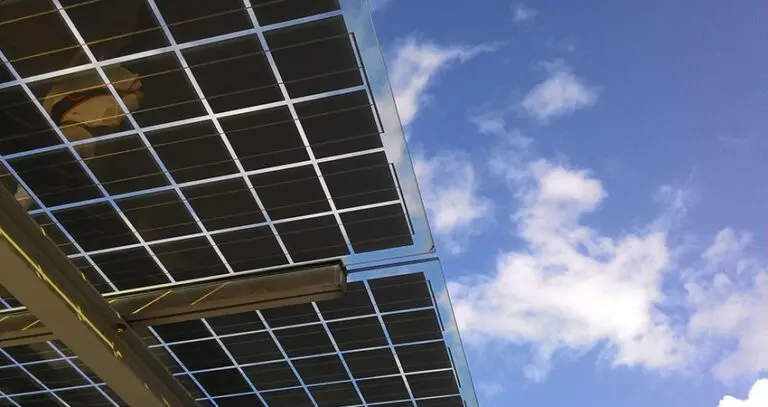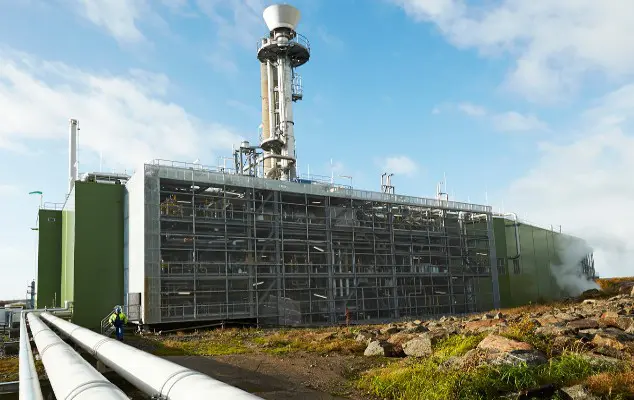
Dong Energy’s new REnescience technology uses enzymes to process unsorted mixed municipal solid waste to recover organics, recyclables and waste derived fuel
A new enzyme based technology able to recover organics, fuel and recyclables by washing mixed MSW, has been readied for commercial scale application at Dong Energy’s demonstration facility in Copenhagen.
By Ben Messenger
Copenhagen is famous for many things. Perhaps most notable among them is the unimposing statue of the Little Mermaid from Hans Christian Andersen’s fairy tale. But mermaids aren’t the only fairy tale in town. Denmark’s capital city is also famous for pioneering modern waste to energy technology.
Way back in 1970 two waste to energy facilities were opened in the vicinity of the city, the Amagerforbrænding plant to the east and the Vestforbrænding plant to the north west. By 2010 the city sent just 2% of the 820,600 tonnes of waste it generated to landfill – 58% was recycled and 39% sent for energy recovery. More recently construction work began last year on the ambitious Amager Bakke waste to energy facility to replace the Amagerforbrænding plant. Once complete, the €470 million project will feature a 1500 metre ski slope on its roof.
For some time there were doubts as to whether the facility would ever make it off the drawing board. But when it comes to managing their waste, the Danes are bold. On a recent trip to the city I saw the new plant rising from the snow swept ground for myself. But as interesting as that was, it wasn’t the purpose of my visit.
That lay hidden through a gap in the fence at the back of the Amager Resource Centre, adjacent to the ambitious new recreational waste to energy plant and around 30 minutes to the south of the city. Tucked away on a tract of industrial, land a marquee had been erected to protect the gathered journalists from the hefty gusts of snow laden wind. But what had enticed an international crowd of hacks to converge at 10am on a Monday morning from across Europe on an industrial estate in a Scandinavian winter?
The food perhaps? Well it was good, but it’s a long way to go for gravlax and pastries. No, we were gathered to witness the commercial launch of a new enzyme based technology for processing a variety of waste streams, including mixed municipal wastes, and capable of producing biogas, recyclables and a refuse derived fuel.
Demonstration Facility
Developed by Danish energy firm, Dong Energy, the REnescience process uses enzymes to liquefy biodegradable material in Municipal Solid Waste (MSW). In doing so it washes the recyclables such as metals, glass and plastics and separates the residual waste which is destined for use as a Refuse Derived Fuel (RDF).
The REnescience system is based on technology developed by Inbicon, one of Dong Energy’s spin off company that specialises in lignocellulosic biomass conversion for converting non-food biomass into second generation bioethanol and high value products.
According to Thomas Dalsgaard, executive vice president of DONG Energy Thermal Power, REnescience technology has been in the pipeline since 2004 and has been developed at a demonstration facility located at the Amager Resource Centre.
The facility began operations back in 2009 and has the capacity to process one tonne of unsorted waste per hour.
Dalsgaard also notes that the demonstartion facility receieved DKK22 million ($4 million) in funding from the energy technological development and demonstration program (EUDP).
“After 10,000 hours of operation, the technology is ready and has been thoroughly tested and documented. We now need to establish the first full-scale plant,” he says.
How it works
On the face of it, the REnescience process is very much like a giant washing machine, with materials being washed with the aid of enzymes produced by micro-organisms. Once the material is cleaned it is removed and sorted. The difference is that most washing machines simply flush the wastewater and its contents away. Here it is captured, the contents harvested and the water recirculated.
The process is continuous, fully automatic and operates at atmospheric pressure and at temperatures of around 50°C. According to Dong, one of the big advantages of the process is that it can treat unsorted mixed MSW, or industrial waste of a similar composition.
Waste arriving at the facility by truck is unloaded in the docking station from where it is transferred into the waste bunker. This ensures that the process has a steady flow. From there the waste is moved to an in-feed system and mixed with water. Water from the back end of the process is recirculated to reduce water use.
The mixture of water and waste is then pre-treated and stabilised by being heated in a reactor. As it continues its journey through the process it is transferred from the heat reactor into the enzyme reactor – a large rotating drum. Operating at around 50°C, the enzymes break down organic matter present in the MSW such as food, paper, cardboard, nappies, etc. into particles of a size and shape that can be dissolved in water – much like table sugar dissolves in coffee. The hydrolysed waste is sorted into three streams using a ballistic separator.
Dong says that the plant currently uses standard enzymes openly available on the market, but that it is also developing specially designed enzymes for REnescience in cooperation with Novozymes. The aim is for these enzymes to lower treatments costs, and to give customers access to the enzymes on long-term contracts, with assured delivery and a set price.
Touring the facility to see the process in action, Dalsgaard explains that ‘Bio-Liquid’ fraction makes an excellent feedstock for Anaerobic Digestion (AD), and produces a high biogas yield of 130 – 170 Nm3 biogas per tonne of waste, enabling either efficient energy production or upgrade to natural gas. It also has a sufficiently low viscosity to allow efficient pumping and storage. By treating unsorted household waste with enzymes more than 90% of the organic waste is converted into Bio-Liquid.
The other two streams recovered from the MSW consist of a 2D fraction composed largely plastic foils and textiles, and a 3D fraction of mainly plastics and metals. The 2D is washed, and can either further processed for recycling or can be pressed and dried for processing into waste derived fuels. The company says that these fuels are storable, offer a high calorific value and low alkali content.
The 3D fraction is sent to a washing drum where further residues are removed to improve the quality of the recyclable materials and to maximise the recovery of the organic material from the MSW. The water used in the washing process of both the 2D and 3D fractions is recirculated back into the process.
The demonstration plant is able to process around one tonne of municipal waste per hour, at commercial scale this will increase to 10 tonnes per hour per line
By-products
According to Dong, the only by-product from the production of gas from the Bio-Liquid is a fibre fraction which can be either incinerated or spread on agricultural land, where the nutrients contained in it may be of benefit.
However, the company also says that the fibre fraction contains two substances it is particularly aware of – DEHP, a plasticiser used in plastics and clothes, and the heavy metal cadmium. If the fibre fraction is to be spread on agricultural land, the limit values for environmentally harmful substances must of course be observed.
DEHP is being phased out in the EU and may only be used with a special permit after February 2015. This is prior to the first REnescience plant commencing operation, so this limit value is not seen as problematic. The threshold limit for cadmium in the fibre fraction is currenttly being met by the demonstration facility.
The cadmium originates from an old type of rechargeable batteries, which are being replaced by new lithium batteries. The company says that it therefore expects the concentration of cadmium in the waste being processed to fall in the near future.
Furthermore, around 75% of the water used in the biofluid is recirculated. Dong says that this means that a full scale REnescience system will use around four cubic metres of water per hour, or 0.4 cubic metres of water per tonne of waste. There is also potential to use wastewater recovered from wastewater treatment plants or from industry.
Enzymes in the reactor break down organic material in the waste until it has a particle size small enough to allow it to dissolve in the water, creating the Bio-Liquid
Scaling Up
Following the tour to see the process operating at demonstration scale, Peter Fischer-Jenson, senior project manager for new bio solutions at Dong Energy, explains that at full scale the process would be capable of processing not one tonne of MSW per line per hour, but 10 tonnes. And being a modular concept, it can easily be scaled up to multiple lines. Based on 8000 hours of operation per year, a full-scale plant with a single line could process 80,000 tonnes of waste per year.
According to the company a facility of this scale would produce approximately 8 million m3 of biogas, which corresponds to the annual natural gas consumption ofaround 5000 households, and an annual CO2 reduction of up to 13,000 tonnes. The waste would also yield between 4000 to 6500 tonnes of plastic and 1600-3800 tonnes of metal for recycling, although this would vary from country to country, depending on the waste composition.
Markets
DONG Energy says that it is currently in dialogue with several different business partners in Denmark and abroad in order to build a full-scale REnescience plant, as several countries are looking for new solutions to their waste problems and have acknowledged that waste is a resource.
“We’re experiencing a growing interest in the Netherlands and the UK, but also in China, the USA and the Middle East, there is an interest and a market potential for this technology,” says Dalsgaard.
But the executive vice president emphasised that he would like the first full-scale plant to be built in Denmark: “It would be a global showcase creating a demand for Danish know-how and competences to develop and construct similar plants.”
Acording to Dalsgaard there are promising signs that the first full-scale plant will be in Denmark and the company is already working with the municipalities of Fredericia, Kolding and Middelfart. The aim is to mature the technology and design a full-scale plant in the Triangle Region of Denmark with a capacity of 80,000 tonnes of waste per year. The EUDP is also helping to fund this project.
The company says that it has also put a considerable amount of study in over the last three years to assess the applicability of REnescience for the UK market. Typical waste composition and analysis of residual municipal waste streams have been considered, with the resulting mass and energy balance indicating that the technology could be highly effective from an economic point of view, while meeting the relevant technical and legislative criteria.
A Fine Solution to Landfill Tax Revisions?
During this undertaking (involving market testing and active discussions with waste management companies), the company says that it became apparent that another potential application was possible, which is perhaps unique to UK market circumstances at the current time.
Due to the elevated levels of landfill tax, and the emerging guidance from Her Majesty’s Revenue & Customs (HMRC), it seems probable that the disposal of trommel fines, resulting from the sorting of waste materials in Material Reclamation Facilities (MRF) and similar facilities, will become much more expensive.
One of the principle reasons for this situation is the potentially high content of organic matter within the fines, which is mixed up together with inert matter and other materials, such as small pieces of plastic and metal. The particle size of the fines is understandably small, which exacerbates the difficulties, and therefore the cost, of physical separation.
However, according to Dong, one of the main advantages of the REnescience process is the high efficiency of the organics extraction and separation process, through the aggressive action of the enzymes.
Once the vast majority of the organic content has been extracted, the remaining fraction of the fines will consist of the inert materials, plastics and other non-reactive constituents. The process will consume the smaller particles of textiles, paper and card and combine them into the organic fraction.
The remaining fraction should provide a much lower disposal cost since the organic fraction has been removed. If necessary, the small plastics fraction can be removed from the inert fraction and disposed of separately as RDF.
Conclusions
Copenhagen has been at the forefront of thermal treatment for decades. While projects such as the Amager Bakke facility maintain the City’s reputation in the field, it has also set itself the goal of reducing the waste it incinerates by 20% from 2010 to 2018 and increasing recycling.
With its ability to recover additional recyclables, as well as 90% of organic materials from unsorted MSW, the move from demonstration to full scale operations for the REnescience technology could well help the city achieve those goals.
The story of Danish innovation in managing wastes may not be quite the stuff of a Hans Christian Anderson fairy tale, but’s certainly a familiar tale – and it looks set to continue.


